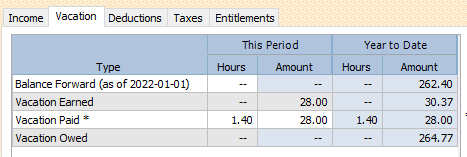I don't have the payroll module, because I only have 1 employee. I'm still able to use Sage payroll by manually entering the taxes. In the vacation paid box it automatically calculates the vacation amount but the hours are left blank. Do I have to enter the Hours under vacation paid? We pay our employee vacation pay on each pay period.
Sage 50 Canada
Welcome to the Sage 50 Canada Support Group on Community Hub! Available 24/7, the Forums are a great place to ask and answer product questions, as well as share tips and tricks with Sage peers, partners, and pros.
Payroll
Do I enter the hours under vacation paid? if paying each pay period




